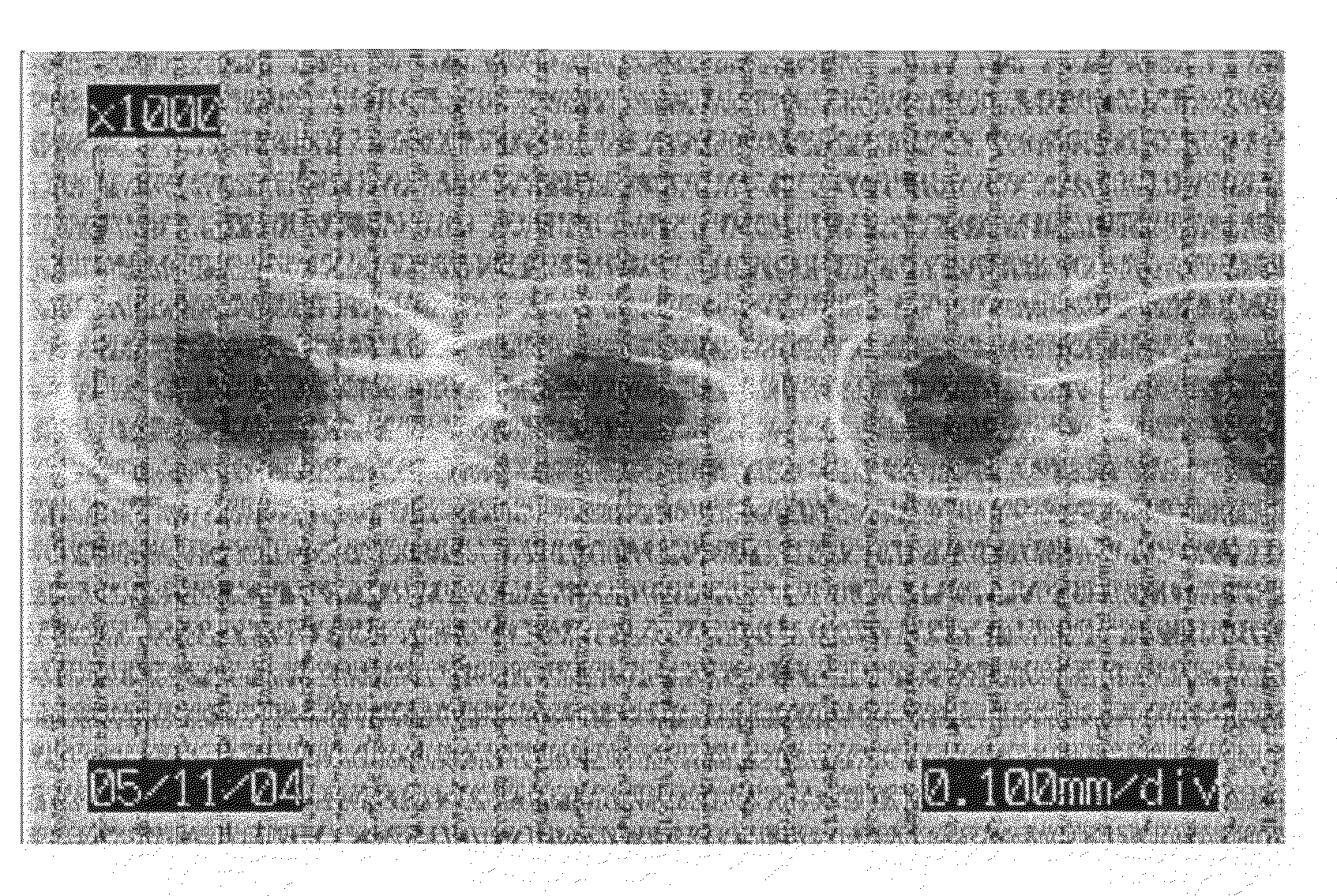Method of Modifying Liquid Crystal Polymers
a liquid crystal polymer and liquid crystal technology, applied in the field of liquid crystal polymer modification methods, can solve the problems of insufficient increase of polymerization degree before forming, limited improvement of physical strength, and fibers, films and the like to be formed from wet process using solvents, etc., to achieve the improvement of tensile strength and elastic modulus, improve the degree of polymerization, and improve the effect of tensile strength
- Summary
- Abstract
- Description
- Claims
- Application Information
AI Technical Summary
Benefits of technology
Problems solved by technology
Method used
Image
Examples
preparation example
Synthesis of Liquid Crystal Polymer (LCP)
[0050]Into a reaction container equipped with a stirring blade and a distillation tube, 256 parts of 4-hydroxybenzoic acid, 129 parts of 2-hydroxy-6-naphthoic acid and 266 parts of acetic anhydride were charged. The mixture was heated from 40° C. to 145° C. over 1 hour in a nitrogen atmosphere and was held at 145° C. for 0.5 hour. Then, the mixture was heated to 325° C. over 7 hours and subsequently was caused to react at 325° C. for 30 minutes, followed by pressure reduction at 325° C. The pressure was reduced down to 100 torr over 90 minutes, followed by a polymerization reaction at 100 torr. When the reaction was continued for 10 minutes, since the stirring torque had reached a predetermined value, the polymerization vessel was closed tightly and the reaction was stopped by increasing the pressure in the polymerization vessel to 0.1 MPa.
[0051]Then, a valve provided at the bottom of the polymerization vessel was opened and thereby the conte...
example 1
[0057]The LCP synthesized in Preparation Example was molded using an injection molding machine (“UH1000-110” manufactured by Nissei Plastic Industrial Co., Ltd.) at a cylinder temperature of 300° C. to yield an LCP plate of 89 mm in length, 54 mm in width and 0.8 mm in thickness.
[0058]Using a Ti:sapphire laser (wavelength of 780 nm, average output power of 600 mW, frequency of 200 kHz, pulse width of 200 femtoseconds) manufactured by Coherent Co., a femtosecond laser beam was focused onto the surface of the resulting LCP plate (focused area: circular area of about 50 μm in diameter) through an objective lens with a magnification of 5.
[0059]As a result, blue fluorescence (second harmonic generation: SHG) was generated immediately after irradiating and a hole as large as about 10 μm to about 20 μm was formed at an irradiation spot by laser abrasion accompanied by thermal impact. A modified portion was observed around the hole. FIG. 1 is a photograph showing the appearance of the LCP p...
example 2
[0060]To a Labo Plastomill 100C100 manufactured by Toyo Seiki Seisaku-sho Co., Ltd. equipped with a T die having a die width of 150 mm and a compression ratio of 2.0, which is adjusted to a cylinder temperature and die temperature at 300° C., the LCP synthesized in Preparation Example was charged. Then, a film having a thickness of about 50 μm was obtained while winding it at a winding rate of 3 m / min.
[0061]Using an erbium-doped quartz fiber laser (wavelength of 780 nm, average output power of 0.14 mW, frequency of 1 kHz, pulse width of 215 femtoseconds) manufactured by Cyber Laser Co., modification was made to a 6 mm×24 mm area of the LCP film by irradiation with a femtosecond laser at an irradiation rate of 10 μm / pulse (10000 μm / sec).
[0062]The sample was subjected to molecular weight distribution measurement by gel permeation chromatography (GPC). FIG. 2 is the spectra showing the results of the GPC measurement of the modified portion and the unmodified portion of the LCP. There i...
PUM
| Property | Measurement | Unit |
|---|---|---|
| length | aaaaa | aaaaa |
| width | aaaaa | aaaaa |
| heat resistance | aaaaa | aaaaa |
Abstract
Description
Claims
Application Information
 Login to View More
Login to View More - R&D
- Intellectual Property
- Life Sciences
- Materials
- Tech Scout
- Unparalleled Data Quality
- Higher Quality Content
- 60% Fewer Hallucinations
Browse by: Latest US Patents, China's latest patents, Technical Efficacy Thesaurus, Application Domain, Technology Topic, Popular Technical Reports.
© 2025 PatSnap. All rights reserved.Legal|Privacy policy|Modern Slavery Act Transparency Statement|Sitemap|About US| Contact US: help@patsnap.com



